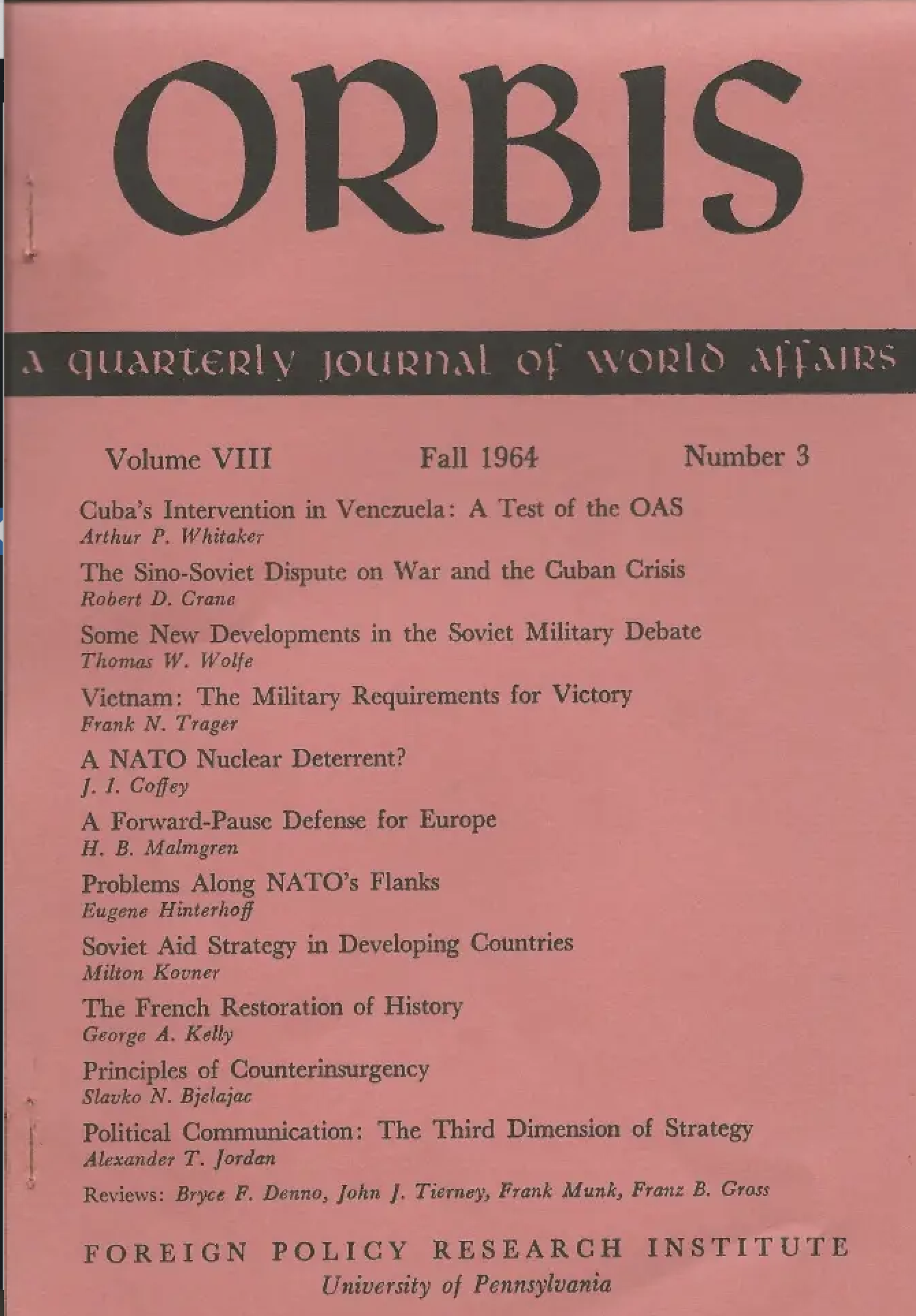NATO and the Defense of Europe: 1964 versus 2024
How different is the defense situation in Europe today versus 1964?
This may seem an odd question given how much has changed, but in actual fact while the context has changed dramatically, the core challenge of protecting the integrity of NATO European territory remains quite similar.
This point was driven home to me when working on the book which will be published later this year bringing together Dr. Harald Malmgren’s essays published on Second Line of Defense since 2009.
Harald published an essay in Orbis in 1964 which I am including in the book which focused on European defense. This was written after his time being involved during the Kennedy Administration in defense issues, including the Cuban Missile Crisis, and working from the Institute for Defense Analysis inside the Pentagon.
The title clearly underscored the topic being considered: “A Forward Pause Defense for Europe.”
The title underscored the key challenge which remains the same: How to defend Europe forward but to do so in a way that one can negotiate the end of hostilities with the Soviet (now read Russian) leadership and end up better rather than worse off?
How to defend forward, and how do the conventional capabilities intersect with nuclear weapons, notably tactical nuclear weapons, in creating escalation ladders in conflict and negotiation?
How do you manage the NATO coalition to build an integrated defense capability that at the same time can be managed to negotiate with the Soviet leadership which has several lines of attack and can use their tactical nuclear weapons to try to dominate the escalation ladder in order to negotiate a position which favors them?
If you change the word Soviet to Russian, it is not hard to see the continuity.
But the differences are profond as well.
On March 13, 2024, I sat down with Malmgren to discuss the continuities and differences and how we might view the challenges of European defense and negotiating a “pause” in forward defense in today’s conditions.
When discussing the 1964 article, Harald emphasized that “I focused on the importance of time in military operations correlated with negotiations. By having the capability to have time to redeploy your forces, re-target on key points that can bring you closer to having the upper hand is also related to using the time to shape an effective negotiating strategy.”
I pointed out that having a zero-sum conflict between at the time the two global nuclear superpowers was not going to be a win for either side. The focus had to be upon shaping an escalation ladder that the other side recognized and affected their military and negotiating strategy.
But the European situation is clearly different in 2024 from 1964.
In 1964, the Soviets had a significant buffer from the West called the Warsaw Pact. This gave them significant flexibility in mounting political and military pressure in a crisis.
This buffer is gone and clearly what Putin has envisaged is building a buffer against a very large Europe allied to the United States.
But the target is Europe, less than America, in Putin’s calculations. The continued military and political weakness of Germany is part of the buffer for Putin. A neutralized Ukraine is another. The flanking actions in the Middle East and Africa are clearly aimed at shaping a Europe more compliant with his wishes.
Compared to 1964, both Russian and American roles in the world have declined. Russia has been reviving its role by working relationships with other authoritarian powers, while operating from Middle Eastern and African bases, and using various tools of influence inside Europe, notably those associated with information war.
The United States is the leader of NATO, but a NATO vastly expanded with various cross cutting coalitions within NATO, which reduce significantly the ability to negotiate with the Russians compared to 1964.
Who is negotiating the “pause” in the NATO-Russian war in Ukraine?
NATO assuredly works to shape a common military strategy, but it is difficult to see how the Nordics, Poland and the Baltic states, on one side, have much in common with German thinking about defense and how to deal with the Russians, on the other side.
And the United States is not very capable to manage termination of conflict with an effective negotiation approach.
In fact, whether it be Iraq or Afghanistan or the current Ukrainian conflict, it is hard to find the intellectual core in Washington thinking through “the pause” part of conflict.
And the threat of the use of nuclear weapons is not swept away simply by ignoring how these weapons were conceptualized in 1964.
They are integrally part of an escalation ladder and a pause in conflict calculation, both in 2024 and 1964.
And there is another clear parallel between 1964 and now. In his article, Harald discussed at length various ways to manage the space versus tine challenge. What space do you give up in a military operation to maneuver to have time to effectively strike back and gain ground?
With what the Russians have done to the Ukrainians, no front line NATO state is eager to be the place where space is traded for time.
So how is this trade-off going to be handled the U.S. and European political-military leadership?
We closed by comparing how this subject was worked in 1964 and 2024.
When Hal wrote his article, there was a solid group of strategic thinkers, many from the World War II generation, focused on the real-world aspects of their strategic analysis.
Now the situation is different.
As Malmgren underscored: “There is no real overarching strategic thinking going between Washington and Europe.
“Military issues like I wrote about in 1964 is not the province of experts.
“They have to be core considerations for the political class in approaching the future of the West.”

